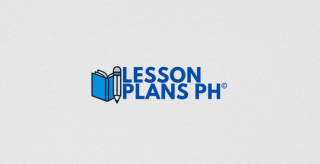DAILY LESSON LOG in MUSIC & ARTS 11 (1st Quarter)
I. Objectives:
LC: Distinguishes aerobic from muscle- and bone-strengthening activities
At the end of the lesson, the learners should be able to:
- Define and differentiate aerobic, muscle-strengthening, and bone-strengthening activities.
- Understand the importance of the FITT principle in designing physical activities.
- Appreciate the benefits of regular physical activity to overall health.
II. Content: Health-Optimizing P.E. (H.O.P.E.) 1 – Exercise for Fitness
- Aerobic activities
- Muscle- and bone-strengthening activities (resistance training)
III. Learning Resources:
- PE and Health Teacher’s Guide – Pages 1–5
- PEH11FH-Ia-1 Learner’s Module from LR Portal
- Textbook: Physical Education and Health for Senior High School
- “Exercise is WISE” TG, Unit 1, Pages 1–14
- Charts, FITT Principle diagram, exercise images, multimedia clips
IV. Procedures:
A. Reviewing previous lesson or presenting the new lesson:
- Activity: “Let Me Think” Table – Compare childhood vs. current physical activities
- Use responses to introduce structured physical activity and exercise
B. Establishing a purpose for the lesson:
- Ask: “Why is it important to understand different types of physical activities?”
- Relate answers to fitness, health, and daily functioning
C. Presenting illustrative examples/instances of the lesson:
- Define aerobic, muscle-strengthening, and bone-strengthening activities
- Introduce the FITT Principle: Frequency, Intensity, Time, Type
D. Discussing new concepts and practicing new skills #1:
- Group Activity: Divide class into 3 teams
- Each team creates a demo or poster showing:
- Examples
- Benefits
- How to perform the activity
- Present findings to the class
E. Discussing new concepts and new skills #2:
- Groups present outputs
- Teacher asks:
- “How does muscle strengthening improve your daily life?”
- “Why is bone strength important as you age?”
- Provide clarifications and deeper explanations
F. Developing mastery (guides formative assessment):
- Individual Work: Short Quiz
- Match exercise types with benefits
- Identify FITT components in scenarios
- Example: “Write a FITT plan for improving cardiovascular endurance”
G. Making generalizations and abstractions about the lesson:
- Ask:
- “What kind of exercises do you need more of?”
- “How does understanding exercise types and FITT help you plan a healthier lifestyle?”
- Complete the sentence: “To stay fit and healthy, I will…”
H. Finding practical applications of concepts and skills in daily living:
- Examples:
- Climbing stairs as bone-strengthening
- Dancing at family gatherings as aerobic
I. Evaluation of Learning:
- Short Answer Quiz or Worksheet:
- Define aerobic, muscle-, and bone-strengthening activities
- Explain and apply the FITT principle
- Use rubric from TG p. 4
J. Additional activities for application or remediation:
- Enrichment: Create a one-week physical activity plan using FITT and all three exercise types
- Remediation: Small-group tutorials with video demos and simplified examples
(alert-passed) This lesson plan promotes physical literacy, health awareness, and self-management. Teachers are encouraged to integrate real-life examples and student reflections.

.png)

